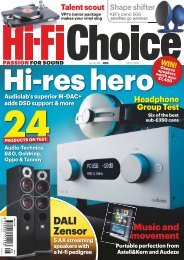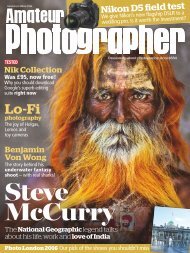Create successful ePaper yourself
Turn your PDF publications into a flip-book with our unique Google optimized e-Paper software.
Saturn’s<br />
phantom spokes<br />
appear as bright<br />
radial lines<br />
reaching out<br />
across the<br />
planet’s rings. NASA/<br />
JPL/SPACE SCIENCE INSTITUTE<br />
(TOP); CASSINI IMAGING TEAM,<br />
ISS, JPL, ESA, NASA (BOTTOM<br />
IMAGES)<br />
The ringed<br />
planet saw seasons<br />
change for billions<br />
of years before<br />
NASA’s Cassini<br />
spacecraft caught<br />
this first shot of<br />
saturnian equinox.<br />
NASA/JPL/SPACE SCIENCE<br />
INSTITUTE (OPENING SPREAD)<br />
eagle-eyed observer<br />
results with photometric observations he<br />
was taking with a 16-inch reflector at<br />
Harvard’s remote Oak Ridge Observatory.<br />
Considering my routine brightness estimates<br />
of variable stars to within 0.1 magnitude,<br />
I told him it might be possible and<br />
was eager to try.<br />
Observing lessons<br />
I started by observing Saturn through<br />
an eyepiece that yielded 125x. I thought I<br />
could maximize my chances of success by<br />
condensing the light of the A ring, which<br />
would make any brightness differences<br />
more noticeable. But I abandoned the<br />
search because light from the B ring overpowered<br />
the view. I also realized that trying<br />
to search for “possible” 0.1-magnitude<br />
differences across a single expanse of light<br />
was different from comparing a variable<br />
star of unknown brightness to different<br />
point sources of known brightness.<br />
I had to rethink my strategy. Because<br />
Saturn was high in the sky after sunset,<br />
I decided to start observing as soon as it<br />
became visible in the twilight. This doublestar<br />
observing technique would reduce the<br />
contrast between the A and B rings, allowing<br />
me a better view. I also selected an<br />
8.4mm Fecker eyepiece (a simple design<br />
combining two lenses) that provided a narrow<br />
field of view (10') and a magnification<br />
of 327x through the 9-inch refractor. In<br />
WWW.ASTRONOMY.COM 51






